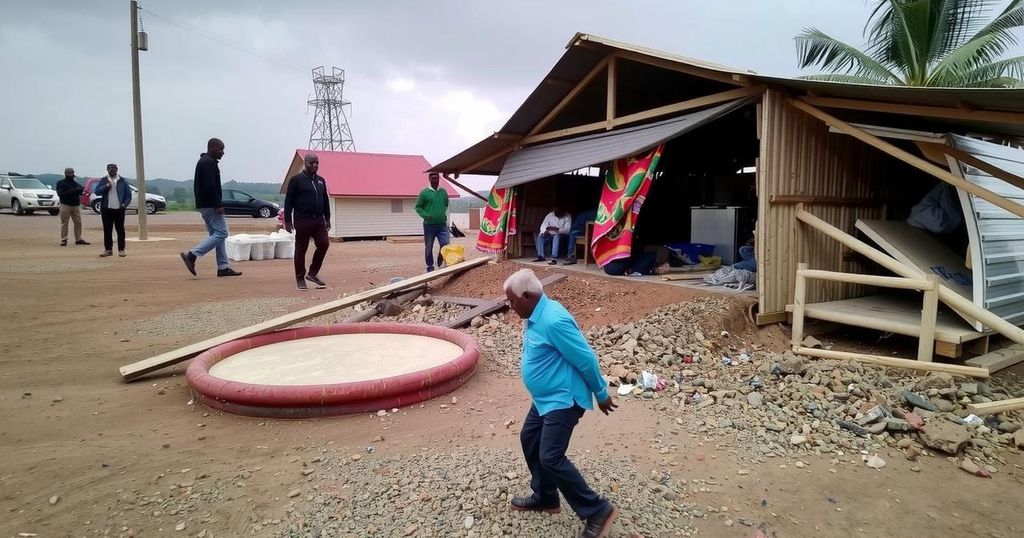Ethiopia Evacuates 80,000 Amid Earthquake Fears and Volcanic Activity
Ethiopia is evacuating around 80,000 citizens due to a series of earthquakes, notably a 5.8 magnitude quake linked to volcanic potential in the Dofen Mountain region. No casualties have been reported, but structural damage has occurred and residents are leaving unsafe areas. The government, alongside experts, seeks to mitigate risks and assess the situation following these seismic events.
The Ethiopian government has commenced the evacuation of approximately 80,000 individuals in response to a series of earthquakes affecting the Afar, Oromia, and Amhara regions. The seismic events, which include over ten earthquakes since Friday, raised alarms about potential volcanic activity in the Dofen Mountain area, located in the Awash Fentale district. The United States Geological Survey recorded a significant 5.8 magnitude quake on Saturday, indicating an upsurge in both the intensity and frequency of seismic occurrences. Some residents have reported having to leave their homes due to the tremors, and while no casualties have been recorded, structural damage has been noted. Emergency workers have been deployed in the most affected districts to assess damages and evacuate vulnerable populations.
Ethiopia grapples with the geological complexities of being located in the East African Rift Valley, where tectonic movement can lead to earthquakes and volcanic eruptions. This history necessitates vigilance due to the country’s many active regions, particularly in the Afar area. With the introduction of building code standards in 1983, concerns have grown regarding compliance and adherence, which are crucial as urban infrastructures may not be equipped to withstand increased seismic activity. Experts emphasize the importance of updating these standards and reinforcing structures to mitigate risks in the face of escalating geological threats.
The ongoing seismic activity in Ethiopia has necessitated a substantial evacuation effort and heightened government response. As the authorities address immediate safety concerns, the need for improved building standards and public awareness becomes increasingly critical. Continuous monitoring and assessment of the earthquake’s impact on social and economic institutions are imperative to safeguard the vulnerable populations living in seismic zones. Addressing these issues is vital to enhancing the resilience of communities against future geological threats.
Original Source: www.voanews.com




Post Comment